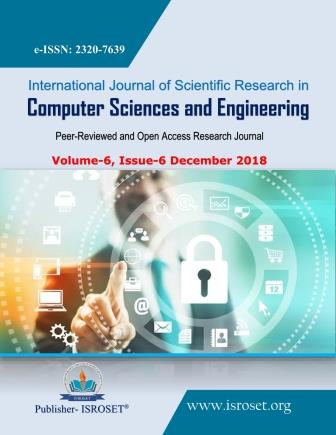The role of Cyber Security and Human-Technology Centric for Digital Transformation
Keywords:
Cyber Security, Human technology, digital transformationAbstract
Force point’s human-centric cyber security systems protect your most valuable assets at the human point; the development of the digital transformation in the organizations has become more expanding in these present and future years. This is because of the active demand to use the ICT services among all the organizations whether in the government agencies or private sectors. While digital transformation has led manufacturers to incorporate sensors and software analytics into their offerings, the same innovation has also brought pressure to offer clients more accommodating appliance deployment options. So, their needs a well plan to implement the cyber infrastructures and equipment. The cyber security play important role to ensure that the ICT components or infrastructures execute well along the organization’s business successful. This paper will present a study of security management models to guideline the security maintenance on existing cyber infrastructures. In order to perform security model for the currently existing cyber infrastructures, “Mobile devices and applications involves ensuring mobile devices and the applications used on these devices are secure and meet specified standards,” he continues. “Enable features such as conditional access to ensure applications and data are kept secure and separate from personal information on user owned devices. combination of the some security workforces and security process of extracting the security maintenance in cyber infrastructures. In the assessment, the focused on the cyber security maintenance within security models in cyber infrastructures and presented a way for the theoretical and practical analysis based on the selected security management models. Then, the proposed model does evaluation for the analysis which can be used to obtain insights into the configuration and to specify desired and undesired configurations. The implemented cyber security maintenance within security management model in a prototype and evaluated it for practical and theoretical scenarios.
References
J. May, Analyzing the socio-organizational constructs for IS security within organizations, in: S. Furnell, P. Dowland (Eds.), in: Proceedings of the 11th IFIP TC11. 1 Working Conference on Information Security Management, Richmond, VA, 2008.
K.H. Guo, Y. Yuan, The effects of multilevel sanctions on information security violations: a mediating model, Inf. Manage.
A. Simmonds, P. Sandilands, L.v. Ekert, An ontology for network security attacks, in: S. Manandhar, J. Austin, U. Desai, Y. Oyanagi, A. Talukder (Eds.), Applied Computing, Springer, Berlin, 2004,
D. Trcek, Security models: refocusing on the human factor, Computer 39, 2006,
M.d. Vivo, G.O.d. Vivo, G. Isern, Internet security attacks at the basic levels, ACM SIGOPS Oper.
ISO/IEC 17799 (2005), Information Technology – Security Techniques – Code of Practice for Information Services, International Organization for Standardization, Geneva.
J. Fonseca, M. Vieira and H. Madeira, "Evaluation of Web Security Mechanisms using Vulnerability and Attack Injection," IEEE Transactions on Dependable and Secure Computing,
C. Melara, J.M. Sarriegui, J.J. Gonzalez, A. Sawicka, D.L. Cooke, A system dynamics model of an insider attack on an information system, in: J.J. Gonzalez (Ed.), From Modeling to Managing Security: a System Dynamics Approach, Norwegian Academic Press, Kristiansand, Norway,
C.E. Landwehr, Formal models for computer security, ACM Computer.
D.L. Nazareth, J. Choi, Information security management: a system dynamics approach, Eighteenth Americas Conference on Information Systems (AMCIS- 2012), Seattle, WA, 2012, Paper 3.
D. Trcek, Using system dynamics for managing risks in information systems, WSEAS Trans. Inf. Sci.
M.E. Whitman, H.J. Mattord, Principles of Information Security, fourth ed., Course Technology, Boston, MA, 2014.
M.A. Alnatheer, A conceptual model to understand information security culture, Int. J. Soc. Sci. Hum.
Downloads
Published
How to Cite
Issue
Section
License

This work is licensed under a Creative Commons Attribution 4.0 International License.
Authors contributing to this journal agree to publish their articles under the Creative Commons Attribution 4.0 International License, allowing third parties to share their work (copy, distribute, transmit) and to adapt it, under the condition that the authors are given credit and that in the event of reuse or distribution, the terms of this license are made clear.







